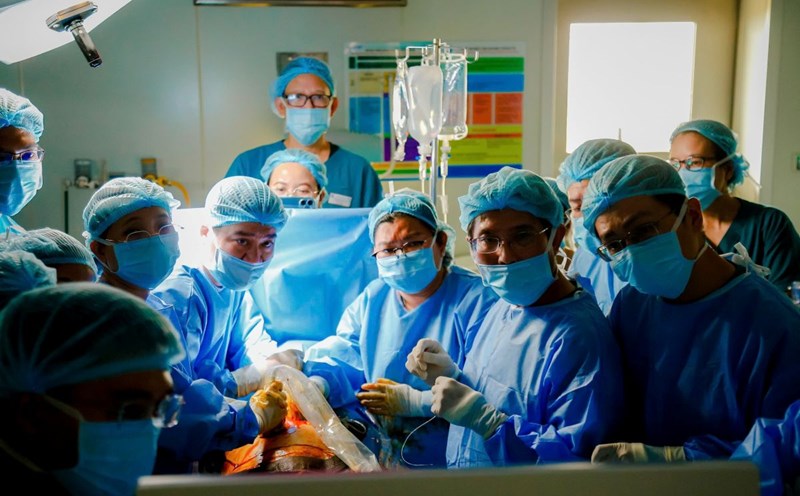On June 9, Deputy Minister of Health Tran Van Thuan congratulated and awarded certificates of merit to Tu Du Hospital and Children's Hospital 1 for their outstanding achievements in performing trans fetal heart intervention for Singaporean mothers.
The success of the recent fetal heart intervention for a Singaporean mother in Ho Chi Minh City is not only an important milestone in Vietnamese medicine. This is a strong signal showing that Vietnamese healthcare can completely transform from a follower to a guide in some specialized fields.
More happily, the 9th fetal heart transplantation procedure was successfully performed not only as a professional effort, but also as the result of inter-hospital, inter-sectoral, and transnational connectivity.
In particular, this is a "cross-flow" treatment - when an international patient in a country that is highly appreciated for health, where many Vietnamese people come to seek treatment like Singapore, comes to Vietnam to perform a highly specialized medical procedure that the health system of their country has not yet performed.
This marks a strategic shift in health development thinking: from internal thinking to expanding regional competitiveness. At the same time, it is proven that Vietnam's public health sector does not lack capabilities, but only lacks conditions and mechanisms to promote the development of endogenous capacity to the right level.
This fetal intervention also shows that if the legality, payment mechanism and public-private cooperation are resolved, many Vietnamese hospitals can become a destination for regional healthcare, not only in terms of price but also in terms of quality.
This is also a weighty response to doubts about the competitiveness of public health in the context of socialization and the shift of medical money abroad is increasingly popular.
In the context of Vietnam promoting the development of the digital economy and high-quality services, medical tourism is a potential direction, if the health sector can build trust from specific evidence such as the recent cross- fetal heart intervention for a Singaporean mother.
The health sector is not only capable of retaining patients in the country, but also attractive enough to attract patients in the region. That is the vision that Vietnam has every chance to reach.
Treatment for Singaporean mothers may be the beginning. But what is needed next is perseverance in institutional reform, proper investment in specialized healthcare infrastructure, and a clear strategy for building a national healthcare brand.
In today's world, not only goods or tourism but also faith in healthcare need to have a brand!













